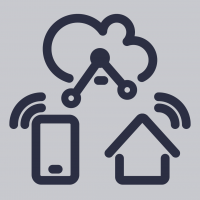Mobile and IoT Challenges: What Testers Need to Know to Improve Their Careers

The Internet of Things (IoT) is a growing business area that testers may want to get ready for. Interestingly, many of the skills and knowledge areas that testers have in the IT, web, PC, and even mobile world will have application in the IoT. However, there are some knowledge domains that may be new or have some twists, and if testers understand them, they will be able to separate themselves from other job seekers.
The first area is the IoT hardware. At first, this may not seem like a big deal. Many testers will say, “We have always had to test the software on a computer.” But hardware in the IoT will be unique and specialized to a product, with sensors and actuators controlling the physical world. This is different from the generic computer hardware of a PC, and even a smartphone. Testers familiar with embedded software device may be at home with the IoT, but testers who have not included functional and nonfunctional testing of the hardware at the same time the software is being tested will need to learn new physical testing techniques.
The unique hardware expands into the next new knowledge area: testing with large numbers of devices, communication connections, software configurations, and other factors. We have seen large numbers of devices in the mobile world, such as with the Android fragmentation problem. But the number of combinations in the IoT world will likely be an order of magnitude or more greater. It will be tempting for testers and companies to avoid this problem by claiming it is somebody else’s responsibility to test these combinations, but this may lead to undetected issues, unhappy consumers, and, eventually, failed devices.
The next knowledge area is security and privacy. It is tempting to believe the industry has a handle on security and privacy, but as mentioned in the previous paragraph, the number of devices multiplies the problem space. If we do not have IoT devices that are reliable and safe, consumers will avoid them, and we have not solved security and privacy yet.
So, are there solutions to the challenges?
I believe testers with the right knowledge can be part of the solution. IoT device projects at first may want to avoid the expense of having highly skilled testers, but the history of software is that many of the companies that succeed do so because they employ knowledgeable, skilled testers.
Testers should be familiar with combinatorial testing, physical hardware testing, security attack test patterns, and ubiquitous user interface assessment.
There will be challenges in the IoT and with connected devices and embedded software, so the smart testers will continue to learn.
Jon Hagar is presenting the session IoT Software Testing Challenges: The IoT World Is Really Different and the tutorial Testing the Internet of Things at the IoT Dev + Test 2017 conference, April 24–28 in San Diego, California.

